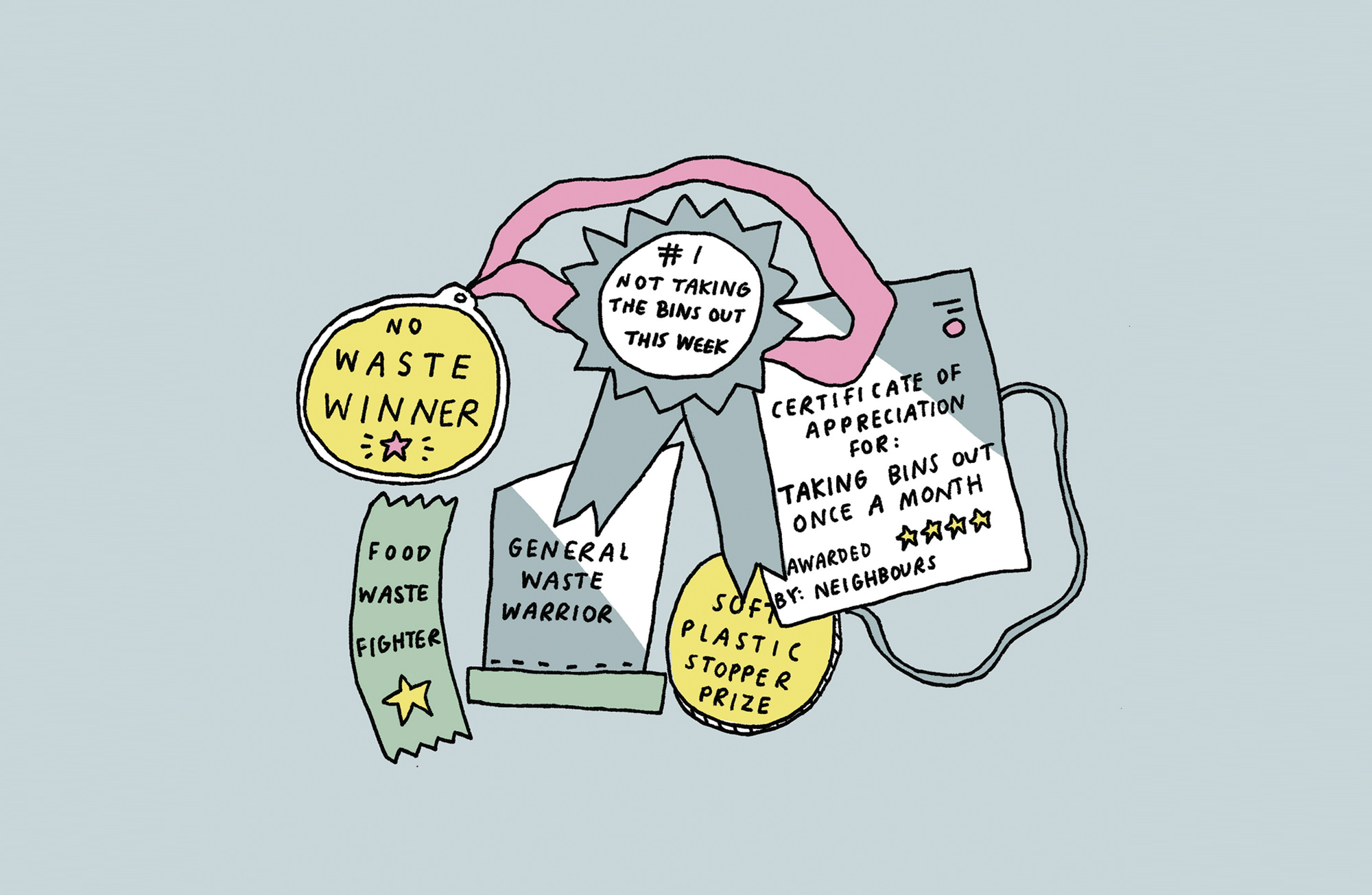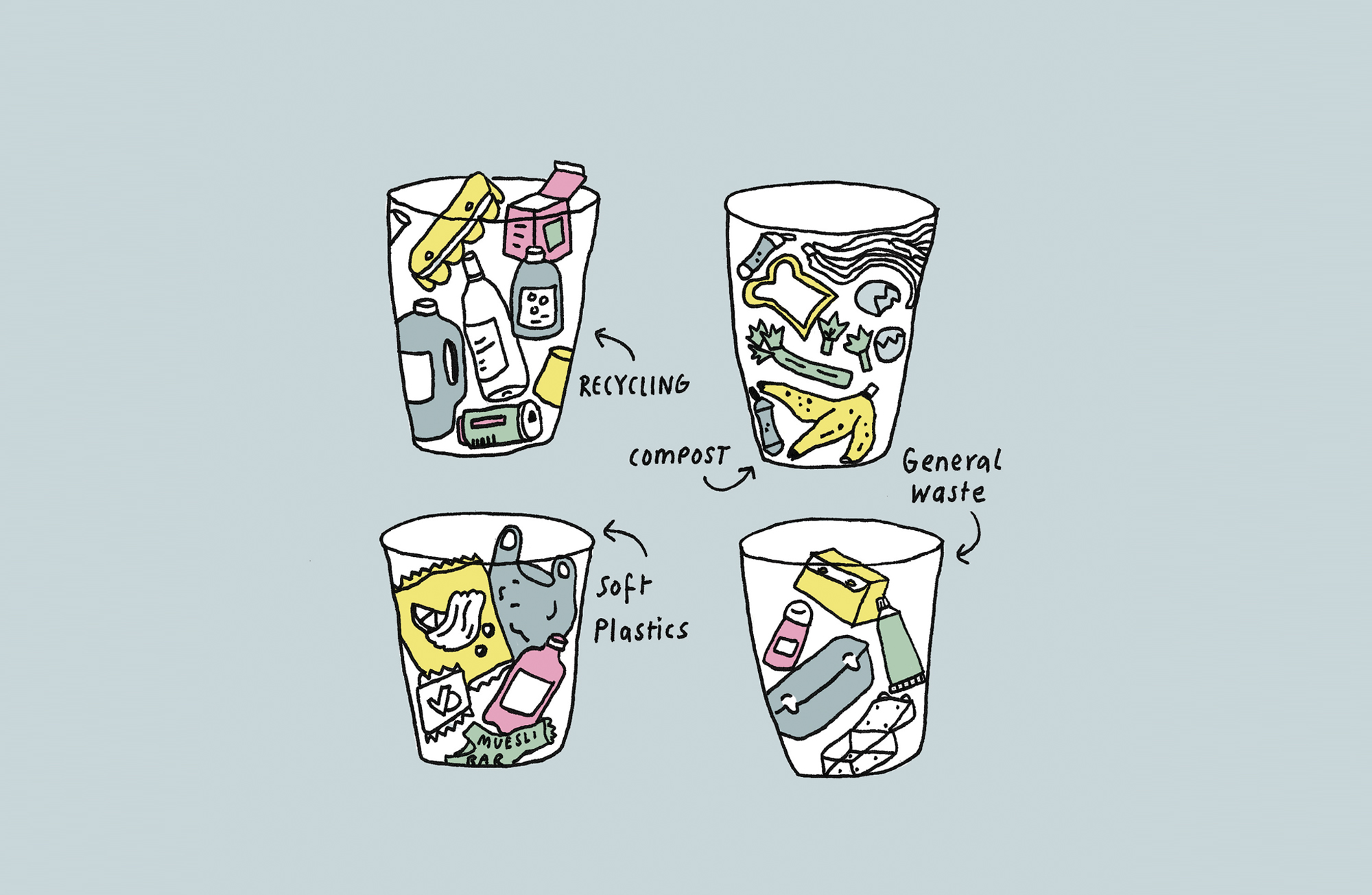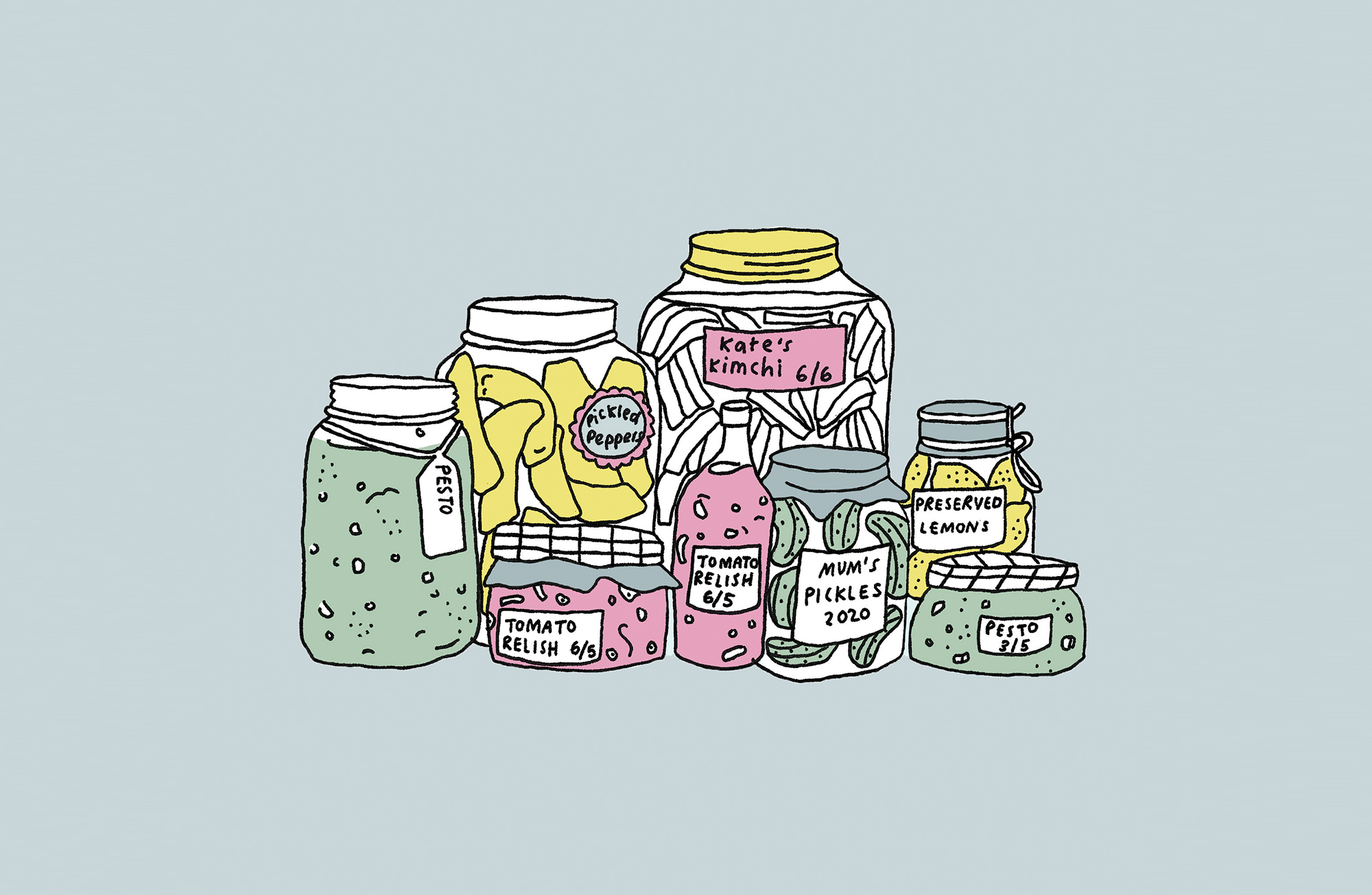How to avoid waste at home with Reground

In 2014, Ninna Larsen was working as a barista. Watching thousands of cups worth of coffee grounds going to landfill, she knew there must be a better use for this perceived waste. So she started Reground and teamed up with Kaitlin Reid. They began by taking coffee grounds from cafes and delivering them to local community gardens. Over the years, Reground has grown, and set its sights on bigger and bigger goals. Now, they help businesses, councils and commercial sites avoid and reduce waste. Here, Kaitlin talks us through what we can do about waste in our own homes.
“At the moment we are facing some big challenges as a community. I am reassessing my habits to have a more positive impact on my life and more importantly on my community and the planet. I think one really simple way that we can reverse climate change is through reducing the amount of waste we produce in our everyday lives. The first step I asked myself was: how can I avoid waste in the first place?”
Tip One: Become aware of your waste
It’s helpful to know exactly what waste you are producing in order to stop producing it. When I lived in a share house, it was a competition with my housemates to see how full (or empty) our bins were.
- Start tracking: record how many times you are emptying household waste into your council bins per week.
- Set a goal: I live in a small one bedroom apartment with my partner, so my current goal is to reduce my visits to the buildings bin room. At the moment, I go about every four weeks for general waste and every two weeks for recycling. What does success for you look like? Perhaps having your general waste bin only ¼ full each week?
Start achievable, make it fun and aim for less waste next week, and less the week after. By July you might wonder where your waste went!
Tip Two: Set up some bins to increase your recycling effort
Head over to your kitchen and have a look around. How many bins can you see right now? If the answer is one, this is the first thing to change. In my small kitchen I have four bins, three that match the larger bins in my building, plus one that doesn’t. Here are a few bins you could set up to increase your recycling effort:
- General Waste: That’s the green bin supplied by your council for non-recyclable items that you may use like baking paper, contaminated soft plastics, paper towel and small amounts of aluminum foil (to recycle this it needs to be rolled up into a ball bigger than your fist so it doesn’t get lost in the sorting machines). This waste goes directly into landfill – a large hole in the ground where the waste lives on, seeping chemicals into the surrounding soil and emitting greenhouse gas into the atmosphere.
- Commingled Recycling: That’s the yellow lidded bin supplied by your council, usually for rigid plastics, aluminum cans, cardboard and unbroken glass. Make sure to check with your specific council for what goes in that bin!
- Food Waste: You may have a Green Food & Garden Organics bin supplied by your council. We have a food dehydrator in our apartment building, a machine that takes food scraps and dries them overnight to a soil amendment (a material when mixed with normal soil, enhances its physical properties), ready to be further composted or taken to a facility where it gets burned for energy. Otherwise you may like to have a separate container for your food waste to be composted at home or at a local garden.
- Soft Plastics: I am lucky enough to take this to work at Reground where we bale and recycle it locally. You can also take it to your local council recycling center, like the Yarra Recycling Centre in Clifton Hill, Melbourne. Many Coles and Woolworths also accept soft plastics.
Tip Three: Tackle food waste
Food waste is hard on our landfill and also on our wallets! For an average household, one out of five shopping bags of food ends up in landfill. How can we avoid this? Composting is a great effort already, but finding ways to throw out less in the first place is also helpful.
- Track it: For one week, write down all the edible food you throw out including things like celery leaves, broccoli stalks and herbs stalks which can actually all be eaten. A whiteboard or piece of paper on the fridge can be a fun way of doing it. You may be surprised at the result!
- Use it: Every Sunday, I use those celery leaves, broccoli stalks and herb stalks to make a stock, pickle or pesto.
- Recycle it: Of course, there is always some food waste that can’t be avoided. With this you could start a compost (even a small one out on the balcony would work if you don’t have a garden, try a Bokashi bin to get you started), or check out Sharewaste to find someone nearby who has a hungry compost for your unavoidable food scraps.
Tip Four: Tackle soft plastics
Soft Plastics are the scrunchable plastics that cover our food and keep things fresh, for example herb packets, gladwrap, and spinach bags. These are recyclable but not in the yellow-lidded Commingled Recycling bin, as they will contaminate it and will live forever in landfill, or broken down into little pieces in our oceans.
- Get rid of bin liners: If you take the food waste out of the general waste bin, your bins will be cleaner. This extra soft plastic also clogs up the landfill.
- Buy in bulk: The day I found out that I could buy udon and soba noodles in bulk with no plastic, was a very happy day for me. If you can, buying food in bulk is a great way to reduce waste.
Tip Five: Keep an eye on hidden waste
- Pots & pans: You can recycle these in your yellow-lidded Commingled Recycling bin.
- Old clothes: You can take these to a charity shop. If they are too old or damaged for people to re-wear, you can get creative and make bags, cushion covers, cleaning cloths and other items for around the home. Sadly we don’t have a way to recycle clothes and textiles in Australia yet, we need to keep pushing our Government for this. If you can’t reuse them, they go in the General Waste bin.
- Broken glass: Pop this into the General Waste bin as this will contaminate recycling.
- E-waste & batteries: Best to find a specialised bin at your local council recycling depot, or closest Aldi supermarket.
Thank you Kaitlin at Reground for sharing these tips with us, and thank you to illustrator Angharad for the wonderful images. If you would like to see more of Angharad’s illustrations follow her on Instagram or check out her website. This recipe is produced in partnership with Knowledge Melbourne, as part of a series of workshops hosted by City of Melbourne online over the month of June and July.



